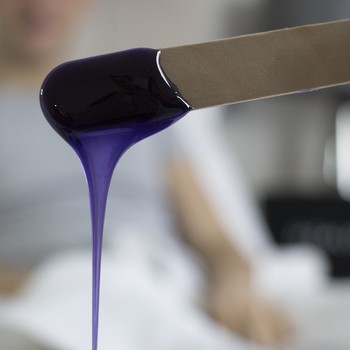The 13 Dos And Don’ts Of Waxing
DO....
1. Exfoliate Before & After
As much as waxing helps to remove dead skin cells and ingrown hairs, exfoliation is key. Minimise the chances of ingrown hairs by exfoliating before your wax – this will help remove the layer of dead skin that traps hairs from sprouting. The wax will also be able to cling to more hairs, making it even more effective.
A few days after the wax, gently exfoliate the area again; doing so will allow hairs to grow in a healthy and natural way. This can be done with a soft loofah, and we usually recommend dry brushing before showering. This should be done gently to avoid micro-grazing or splitting the skin.
2. Have A Warm Bath First
Before your treatment, try to have a warm bath – this will help to open the pores of the skin, making hair removal somewhat easier.
3. Moisturise
The simple yet most effective way of maintaining post-wax silky soft skin is by moisturising. Waxing removes the top layer of the epidermis revealing new, softer skin – but simultaneously strips away the skin’s natural oil and moisture.
4. Know Your Waxes
When you book for a wax – either with Le Salon or at your normal salon – you’ll often be given the choice between strip and hot wax. Strip wax is typically used for larger areas as it’s much quicker to apply and remove; it’s generally better for thicker or less sensitive skin as it grips strongly. When used on sensitive skin, it can lead to bruising, tearing and ingrown hairs.
Meanwhile, hot wax is great for sensitive areas, which is why it’s often the wax of choice for bikini/Hollywood/Brazilian waxes, underarm waxes and sometimes facial waxing too. As the wax is left on the skin for up to a minute, the heat opens the pores and hair follicles, allowing the hair to be removed more easily – this should theoretically make it a less painful option. However, hot wax can be more expensive.
DON’T...
1. Go Hungover
It’s common knowledge that alcohol has a dehydrating effect on the body and skin, so turning up to an appointment hungover could make your wax more painful. When your skin is dryer, your pores retract – the tighter your pores are, the tighter your skin will be holding onto your hairs, resulting in a more painful wax.
2. Use Perfumed Products
Post-wax, avoid perfumed deodorant or perfumed products such as body spray or strong lotion as the chemicals can aggravate the skin and cause soreness. Try products such as Simple and Cetaphil which are fragrance-free and gentle on the skin.
3. Have Hot Baths & Saunas After
The heat given off from a shower, hot bath or hot tub can aggravate the skin post-wax and make it redder and more sensitive. Plus, hot water will widen your pores, giving your skin more of an opportunity to break out in infection or ingrown hairs. Also try to avoid swimming in a public pool for a couple of days as chlorine can be drying and could aggravate delicate skin types.
4. Hit The Gym
First and foremost, going to the gym entails wearing tight, air-resistant clothing, which will cause friction in the area – this can lead to redness and ingrown hairs. Also, the likelihood of sweating is inevitable so this can give way to bacterial infections. Definitely take a day to let your skin retract and snap back to normal before hitting the gym.
LeSalon’s top 5 tips for minimising the pain of waxing…
1. Wear loose-fitting clothing: Tight clothing has a tendency to constrict your movement, body and your skin. It will put more pressure on your skin after a wax, making it feel more tender. This is why we always advise clients to wear looser clothes for when the wax is complete.
2. Take painkillers: It may sound extreme but it does work. Before your waxing treatment, take a light painkiller and make sure you give it enough time to take effect. Naturally, the painkillers will take some of the edge off the treatment, plus it’ll help you relax which reduces the pain even more. Being tense during a wax not only stresses you mentally but your pores actually grip tighter onto hair follicles. Taking Ibuprofen before a treatment can also lessen any mild swelling that might come about from the waxing.
3. Keep it cool: Trust us on this one, this will reduce all kinds of redness or irritation once your wax is done. There are so many cooling creams out there for all types of skin, so it’s worth taking a look as they help with the healing process of the treatment too.
4. Avoid at certain times of the month: Believe it or not, your skin is more sensitive before you get your period. This is caused by lower levels of oestrogen – a recent study found 42% of women experienced heightened sensitivity.
5. Choose an experienced professional: None of these tips will make a difference if your waxing technician is inexperienced. It’s vital to book with a skilled technician who knows simple tricks like pressing the skin immediately after it’s waxed – particularly in painful areas. It’s best if they’re fast and tidy too – the less time you’re being waxed, the less pain. And for many, a chatty therapist helps with the pain – there’s nothing like being distracted by a bit of gossip.
Waxing treatments with Le Salon start from £27; for more information or to book an appointment visit LeSalon.com
DISCLAIMER: We endeavour to always credit the correct original source of every image we use. If you think a credit may be incorrect, please contact us at info@sheerluxe.com.
